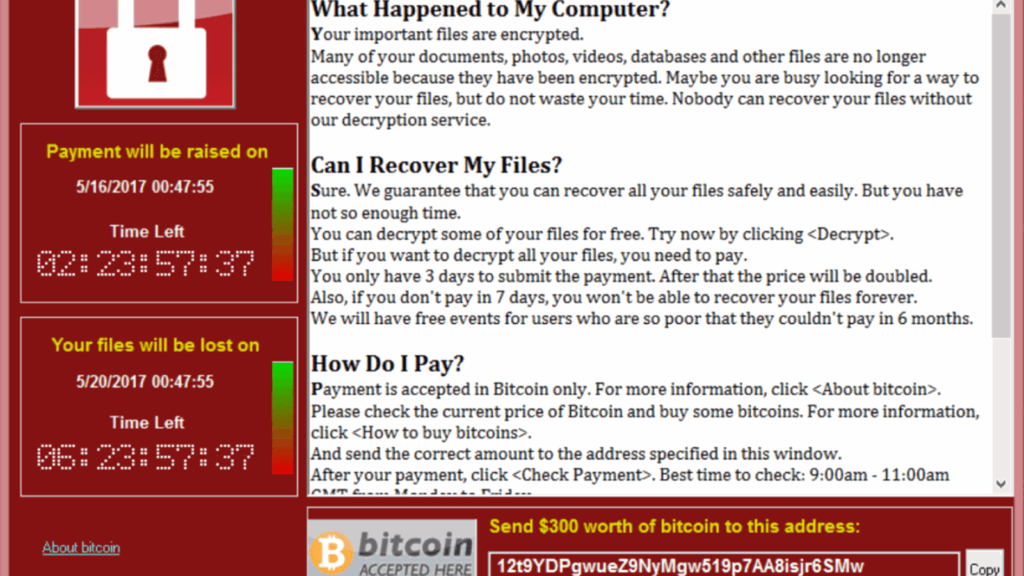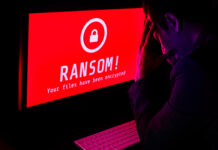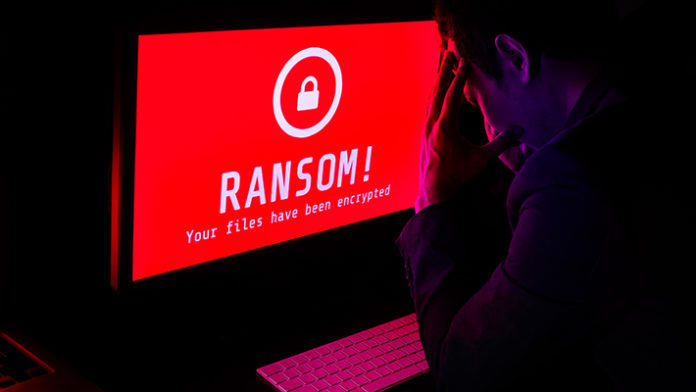What Is Ransomware?
Ransomware is a Malware. This malware Lock your photos, videos, files and documents and this files can only be recovered if you have unlocking key of that Lock.
For Instance: –
If you have saved a word document and in that document suppose you have written “If you want to become hacker, you must think like an hacker“ than this sentence will get encrypted and it will get written in something else which can’t be reversed or decrypted without help of key.
I think you have understood, what exactly Ransomware does……!!!!
So you have got a question that how can we can recover this File which have got encrypted …???
So here hacker demands money to decrypt your data or to provide you the key and the payment should only be done through Bitcoin. Because in Bitcoin you have to only provide your Bitcoin address to get payment and tracking Bitcoin payment is difficult. So hackers choose Bitcoin method to receive payment from victim. Users are shown instructions for How to pay a fee to get the decryption key. The costs may range from a few hundred dollars to thousands, payable to cybercriminals in Bitcoin.
In some cases of ransomware attacks, hacker’s demand money and if you don’t pay them within a week than they double the amount and if victims take more time than 2-3 weeks than they delete your data and that can’t be recoverable anymore.
How hackers actually spread this ransomware ?
Hackers use mainly phishing attack to target victim. They send you an email and in that email they give some instructions to download the file provided in that Email and once you download and opened those file your data will get infected with this Malware. The most important thing to know is that at the end of the process, the files cannot be decrypted without a mathematical key known only by the attacker. The user is presented with a message explaining that their files are now are now inaccessible and will only be dcrypted if the victim sends an untraceable Bitcoin payment to the attacker.
Target for Ransomware :-
Attackers might target universities because they tend to have smaller security teams and a disparate user base that does a lot of file sharing, making it easier to penetrate their defenses. On the other hand, some organizations are tempting targets because they seem more likely to pay a ransom quickly.
For instance, government agencies or medical facilities often need immediate access to their files. So they choose this types of organization as a Target and the price of decryption key is less and affordable, as this amount depends on organization but mostly they demand 700$-1300$.
This amount companies can usually afford to pay on short notice. Some particularly sophisticated malware will detect the country where the infected computer is running and adjust the ransom to match that nation’s economy, demanding more from companies in rich countries and less from those in poor regions

How to prevent ransomware !
- Keep your operating system patched and up-to-date to ensure you have fewer vulnerabilities to exploit.
- Don’t install software or give it administrative privileges unless you know exactly what it is and what it does.
- Install antivirus software, which detects malicious programs like ransomware as they arrive, and whitelisting software, which prevents unauthorized applications from executing in the first place.
- As Ransomware is constantly being written and tweaked by its developers, and so its signatures are often not caught by typical anti-virus programs. In fact, as many as 75 percent of companies that fall victim to ransomware were running up-to-date endpoint protection on the infected machines.
- And, of course, back up your files, frequently and automatically! That won’t stop a malware attack, but it can make the damage caused by one much less significant. Because if you have backup of your files which have been Encrypted then you don’t have to money to hacker as you have your data safe.
Ransomware is big business! Do You Know ?
There’s a lot of money in ransomware, and the market expanded rapidly from the beginning of the decade. In 2017, ransomware resulted in $5 billion in losses, both in terms of ransoms paid and spending and lost time in recovering from attacks. That’s up 15 times from 2015. In the first quarter of 2018, just one kind of ransomware software, SamSam, collected a $1 million in ransom money. This attack got less in 2019-20 because all are aware of this attack and Now a day’s no one pays to hackers for this because paying them will encourage them to attack more organization.
Should you pay the ransom?
If your system has been infected with malware, and you’ve lost vital data that you can’t restore from backup, should you pay the ransom?
You know there are often discounts offered for acting fast, so as to encourage victims to pay quickly before thinking too much about it before you send any money to anybody. And second, paying the attackers doesn’t guarantee that you’ll get your files back. Sometimes the criminals just take the money and run, and may not have even built decryption functionality into the malware, but in mostly cases attacker’s decrypt your data and you will be free from this attack.
So this is all about Ransomware. May All You Have Clearly Stood about Ransomware!
Thank you for reading


![[HINDI] What is DoS attack and DDoS attack?](https://bittentechsolutions.in/wp-content/uploads/2020/04/ddos-218x150.jpg)
![[HINDI] What is juice jacking? Think twice before using public USB ports](https://bittentechsolutions.in/wp-content/uploads/2020/04/juice-jacking-risk-1200x675-1-218x150.jpg)



![[HINDI] What is DoS attack and DDoS attack?](https://bittentechsolutions.in/wp-content/uploads/2020/04/ddos-100x70.jpg)
![[HINDI] USA fake WhatsApp number trick for complete anonymity](https://bittentechsolutions.in/wp-content/uploads/2020/04/1-100x70.png)


![[HINDI] What is juice jacking? Think twice before using public USB ports](https://bittentechsolutions.in/wp-content/uploads/2020/04/juice-jacking-risk-1200x675-1-100x70.jpg)